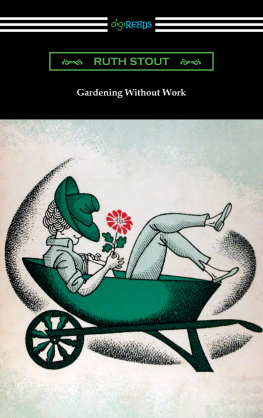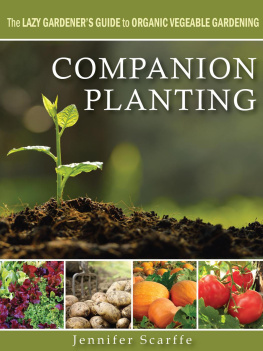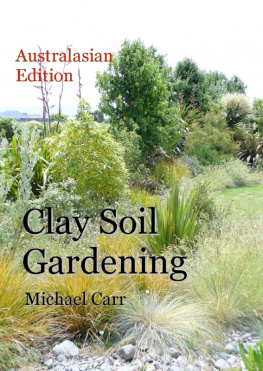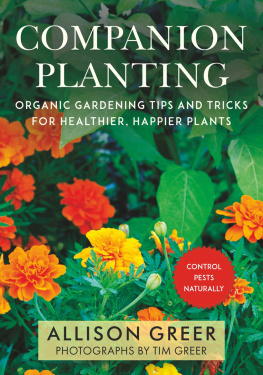Ruth Stout - Gardening Without Work
Here you can read online Ruth Stout - Gardening Without Work full text of the book (entire story) in english for free. Download pdf and epub, get meaning, cover and reviews about this ebook. genre: Art. Description of the work, (preface) as well as reviews are available. Best literature library LitArk.com created for fans of good reading and offers a wide selection of genres:
Romance novel
Science fiction
Adventure
Detective
Science
History
Home and family
Prose
Art
Politics
Computer
Non-fiction
Religion
Business
Children
Humor
Choose a favorite category and find really read worthwhile books. Enjoy immersion in the world of imagination, feel the emotions of the characters or learn something new for yourself, make an fascinating discovery.
- Book:Gardening Without Work
- Author:
- Genre:
- Rating:4 / 5
- Favourites:Add to favourites
- Your mark:
- 80
- 1
- 2
- 3
- 4
- 5
Gardening Without Work: summary, description and annotation
We offer to read an annotation, description, summary or preface (depends on what the author of the book "Gardening Without Work" wrote himself). If you haven't found the necessary information about the book — write in the comments, we will try to find it.
Gardening Without Work — read online for free the complete book (whole text) full work
Below is the text of the book, divided by pages. System saving the place of the last page read, allows you to conveniently read the book "Gardening Without Work" online for free, without having to search again every time where you left off. Put a bookmark, and you can go to the page where you finished reading at any time.
Font size:
Interval:
Bookmark:

GARDENING WITHOUT WORK
F OR THE A GING , THE B USY & THE I NDOLENT
By RUTH STOUT
Gardening Without Work
By Ruth Stout
Illustrated by Nan Stone
Print ISBN 13: 978-1-4209-7068-5
eBook ISBN 13: 978-1-4209-7069-2
This edition copyright 2020. Digireads.com Publishing.
All rights reserved. No part of this publication may be reproduced, distributed, or transmitted in any form or by any means, including photocopying, recording, or other electronic or mechanical methods, without the prior written permission of the publisher, except in the case of brief quotations embodied in critical reviews and certain other noncommercial uses permitted by copyright law.
Cover Image: a detail of the original dust jacket illustration, published by the Devin-Adair Company, New York, 1961.
Please visit www.digireads.com
CONTENTS
God invented mulching
Asparagusthe easiest vegetable of all
Some startling things about corn and some comments on beans, peas and squash
Potatoes in the iris bed and onions in the hay
All those pesky so-and-sos
Where to plant what
Jack Frost and a childrens garden
A strawberry, corn and potato rotationwith comments on witch grass
Flowers and mulch
Conservation is not enough
Fifteen hundred eager beavers
Be glad youre a food faddist
Fit for a gourmet
Hows that again. Professor?
If you would be happy all your life
for Dick
( Professor Richard V. Clemence to you )
with gratitude and affection
God invented mulching
Some years ago I wrote a short article, which appeared in a national magazine, telling about how I had been successfully growing flowers and vegetables for quite a long time with almost no labor but planting and picking. I wasnt swamped with fan mail, but I did get enough excited letters from gardeners all over the United States to make me feel that I had an obligation to the millions of others who hadnt read the article. Also to those who may have read it but needed a worthwhile push to get them started.
I have always liked that prayer which asks for the courage to change those things which we can, for the serenity to accept the ones we cannot change, and for the wisdom to know the difference between the two. Well, here was a situation I could at least try to change; I could write a book about this easy way of gardening.
I finished the first chapter and sent it to my sister to read and comment on. She returned it, saying in effect: You told the whole story in a 1500-word article; how do you expect to fill a book?
I had foreseen that difficulty, had been wondering how on earth I could. But the publisher who was interested in the project suggested that I tell about the hard work, and the struggle, and the various crop failures I had endured during the fourteen years of growing things the old-fashioned way, showing the contrast between it and the new method. Following this advice I had no trouble filling a book which we called How to Have a Green Thumb Without an Aching Back which was published by Exposition Press . And being an incurable optimist, I had visions of cluttering up the lives of all gardeners with leisure. One day my publisher said to me:
Say, stop dreaming. I may sell a few million copies for you, but you arent going to revolutionize gardening.
Well, I wonder. That was several years ago and he is still plugging away on the first million, but garden magazines and farm papers are spreading the glad tidings, and I still, after five years, get a few letters every day from happy converts. More than one librarian has told me that people who borrow my book dont want to part with it; they return it, then, in plain language, they steal it from the shelf. A man who went into the spoiled hay business when my method (which is a year-round mulch) got popular, told me that when he began to run short and had to turn down orders, someone sneaked in and helped himself. And a dentist in Pennsylvania and a doctor in Oregon have both written me that they keep a copy of my garden book in their waiting rooms. Or at least try to; the dentist has had twenty-three copies stolen, the doctor, sixteen.
I am not exactly boasting that my idea turns people into thieves, but I can scarcely help feeling flattered. Its a fair sized job to write a book that people can be bothered just to read; when they begin to steal copies of one youve written you are really getting some place.
But since I had a problem about filling one small volume why do I write another? There are two answers to that; one is that a few points I made could do with some clarifying but the important reason is that I have learned a great deal from the people who have written me and from those who have come to see my method in action. I feel that these experiences and this information should be passed along although much of it will necessarily be secondhand know! edge; in each case I shall make that distinction. I mustn't fall into the habit which I so often deplorethat of laying down laws and making positive statements with no persona first-hand knowledge back of them. I will modify that: I feel that laying down strict laws is bad gardening practice under almost any circumstances.
Over fifteen hundred gardeners have come for a first hand look at my method, more than four thousand others have written to me, and I have no idea how many thousands of people I have given so-called lectures to; my talk lasts for about fifteen minutes, then I ask for questions and comments. All this means that by now I have a fairly accurate idea not only of the points in my book which need some clarification or elaboration, but also of some other points which gardeners want to know and which I didnt touch on.
When, overnight, I became an authority, my outspoken husband, Fred Rossiter, said to me: You are going to be asked ten thousand questions which you cant answer. True enough, but I do have what it takes to say I dont know, instead of floundering around in an effort to find a reasonable facsimile of an answer.
Fred has a scientific approach to a subject; at first he couldnt believe that my ignoring of the experts wouldnt get me into trouble, and when gardeners drove in he would go to the patch with us to lend a helping tongue. Since I write under my maiden name some of the visitors called Fred Mr. Stout; one of our friends asked him if he minded and he replied: Oh no, Im used to it, but the first guy who calls me Mr. Mulch is going out on his ear.
And now lets get down to business. The labor-saving part of my system is that I never plow, spade, sow a cover crop, harrow, hoe, cultivate, weed, water or irrigate, or spray. I use just one fertilizer (cotton seed or soy bean meal), and I dont go through that tortuous business of building a compost pile. Just yesterday, under the Questions and Answers in a big reputable farm paper, someone asked how to make a compost pile and the editor explained the arduous performance. After I read this I lay there on the couch and suffered because the victims address wasnt given; there was no way I could reach him.

... After I read this I lay there on the couch and suffered because the victim s address wasn t given : there was no way I could reach him.
My way is simply to keep a thick mulch of any vegetable matter that rots on both my vegetable and flower garden all year round. As it decays and enriches the soil, I add more.
And I beg everyone to start with a mulch eight inches deep; otherwise, weeds may come through, and it would be a pity to be discouraged at the very start. But when I am asked how many bales (or tons) of hay are necessary to cover any given area I cant answer from my own experience, for I gardened in this way for years before I had any idea of writing about it, and therefore didnt keep track of such details. However, I now have some information on this from Dick Clemence, my A-number-one adviser, whom I will tell you about in a later chapter. He says: Hay is such a variable commodity that any useful advice on quantities must be understood to refer to orders of magnitude only. I should think of twenty-five fifty-pound bales as about the minimum for an area 50 x 50, or about a half-ton of loose hay. That should give a fair starting cover, but an equal quantity in reserve would be desirable. Starting in the summer on sod, the whole business should go on at oncefifty bales, or a ton of loose hay. The experienced gardener can effect economies, and manage with less, but beginners do well to have plenty of hay available.
Next pageFont size:
Interval:
Bookmark:
Similar books «Gardening Without Work»
Look at similar books to Gardening Without Work. We have selected literature similar in name and meaning in the hope of providing readers with more options to find new, interesting, not yet read works.
Discussion, reviews of the book Gardening Without Work and just readers' own opinions. Leave your comments, write what you think about the work, its meaning or the main characters. Specify what exactly you liked and what you didn't like, and why you think so.








